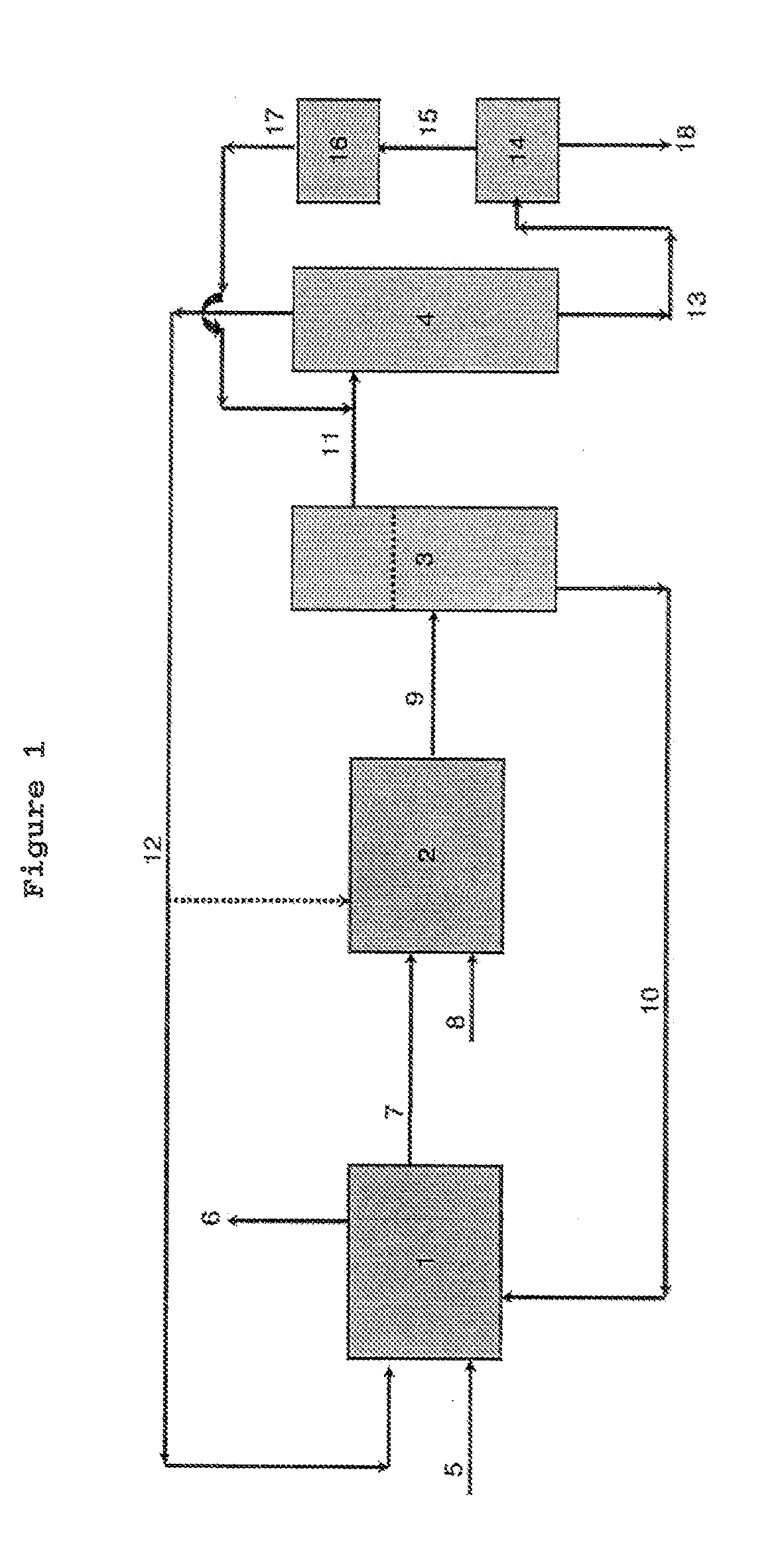Hydrosilylation method
a technology of hydrosilylation and hydrogen sulfide, which is applied in the direction of group 4/14 element organic compounds, chemical apparatus and processes, organic chemistry, etc., can solve the problems ofconsiderable product coloration, and achieve the effects of less product coloration, reduced catalyst concentration, and cost-effectiveness
- Summary
- Abstract
- Description
- Claims
- Application Information
AI Technical Summary
Benefits of technology
Problems solved by technology
Method used
Image
Examples
example 1
Not According to the Invention
[0057]134 g of polyhydrogensiloxane Q1 and 0.135 ml of the platinum catalyst solution G1 (1% strength solution of hexachloroplatinic acid in isopropanol) were initially introduced into a three-neck flask and heated to 105° C. 134 g of 1-octene were metered in continuously such that during the exothermic reaction a reaction temperature of 140° C. was not exceeded. The metering time was 40 minutes. The reaction mixture was stirred for a further two hours at 140° C. and then cooled to room temperature. The hydrogen number was determined as a measure of the reaction progress. The hydrogen number was 31 (desired value<10).
example 2
According to the Invention
[0058]The previous example was repeated using the polyhydrogensiloxane Q2 prepared via cohydrolysis methods instead of Q1. The hydrogen number was 8.2 (desired: <10). After distilling off the volatile constituents at 140° C. / vacuum<1 mbar and filtration, a pale beige alkyl-functional silicone oil was obtained with the following properties: Hazen color number (DIN ISO 6271): 85; viscosity 1110 mPas.
example 3
Not According to the Invention
[0059]Example 1 was repeated using 0.215 ml of the platinum catalyst solution G2 (3% strength solution of hexachloroplatinic acid in 1,2-propanediol) instead of G1. Only a slightly exothermic reaction was observed. The hydrogen number was 183 (desired value<10).
PUM
| Property | Measurement | Unit |
|---|---|---|
| temperatures | aaaaa | aaaaa |
| concentration | aaaaa | aaaaa |
Abstract
Description
Claims
Application Information
 Login to View More
Login to View More - R&D
- Intellectual Property
- Life Sciences
- Materials
- Tech Scout
- Unparalleled Data Quality
- Higher Quality Content
- 60% Fewer Hallucinations
Browse by: Latest US Patents, China's latest patents, Technical Efficacy Thesaurus, Application Domain, Technology Topic, Popular Technical Reports.
© 2025 PatSnap. All rights reserved.Legal|Privacy policy|Modern Slavery Act Transparency Statement|Sitemap|About US| Contact US: help@patsnap.com

